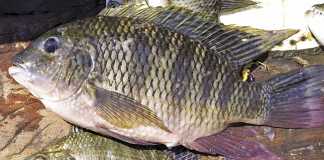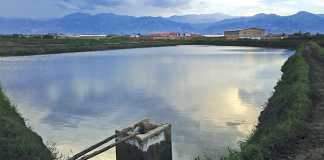It is easy to get dejected when looking at the slow pace of warm water aquaculture in South Africa, particularly so when comparing it with the rapid development of commercial ventures in nearby countries. Zambia in particular has added new farms to its already significant existing production. These include not only the well-known cage culture ventures on Lake Kariba, but the considerable pond production of tilapia. In addition, new and exciting commercial projects are under construction.
However, closer to home and on a positive note, South Africa’s production of high-quality red tilapia is coming of age. Surprisingly, this is not centred in the warmer northern parts of the country, where culture projects seem to be still floundering with unproven technology, but in the south-eastern parts and KwaZulu-Natal. In the Eastern Cape, two farms are now selling red tilapia.
This species is visually pleasing and competes well with red-coloured marine fish species such as Roman and snapper. The flesh is white and flaky when cooked, and has a pleasant mild taste that can be seasoned according to preference. Red tilapia has transparent skin around the body cavity, unlike the dark, pigmented skin of its wild coloured relatives.
No muddy or ‘fishy’ taste
Cultured tilapia never have the so-called muddy taste of wild-caught fish. Interestingly, this taste does not come from mud
at all, but from the fish’s habit of feeding on Microsystis algae during the autumn months. The algae leaves a strong ’fishy’ taste in the flesh that is favoured by some consumers, but certainly not the majority. In the confines of a recirculating fish culture unit, this algae is not present, and as the fish are fed on tilapia pellets there can be no muddy taste.
To highlight the good flavour of his product, one producer has labelled his fish “Clear Waters Tilapia”. He has also put a great deal of effort into presentation: two attractive, neatly gutted and gilled fish are sold in a shrink-wrapped package. According to the distributor, the product is well-received and liked.
Fish farms in the Eastern Cape are now supplying wholesalers with significant quantities of red tilapia. The challenge is to refine the systems to increase both profitability and production. At present, production is concentrated on red Oreochromis mossambicus, but this may soon change as new and improved strains and species become available.
Simplicity
All this activity shows that production of tilapia in closed tunnel-based systems is possible in a cool or high-altitude climate. The work and research have been done. Moreover, we do not need to rely on expensive high-tech systems. Simplicity and robust design have been cornerstones of this successful infant industry.
In addition, feed companies are beginning to offer a range of affordable, quality floating feeds specifically for tilapia; they are replacing others that have been priced off the market. These are all signs of a competitive, developing industry. It is an exciting place to be.













